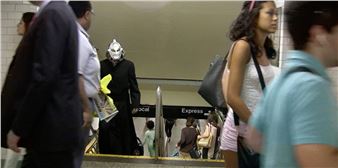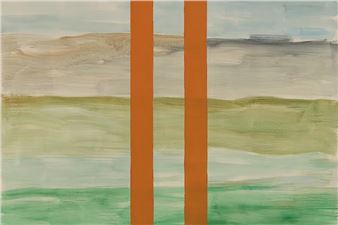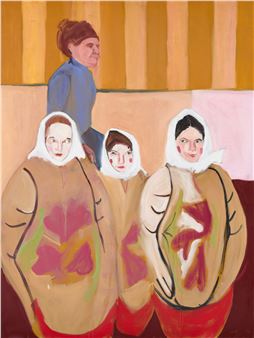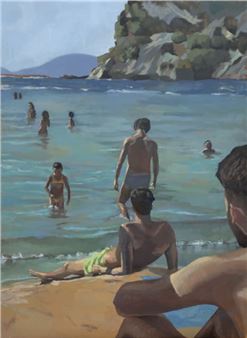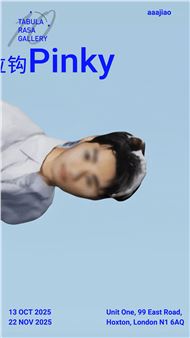Secundino ������á�Ի���
������á�Ի���'s diverse and energetic painting features intricately structured compositions that mix strong linear elements and rich bursts of colour. Some canvases feature abstracted, atomised forms, while others have more densely overlaid imagery in which it is possible to pick out figurative elements.
His paintings deftly combine representation and abstraction, linear draughtsmanship and colouration, minimalism and gesturalism. Over the course of his career ������á�Ի��� has mixed diverse references: a physicality that recalls Action Painting, the shorthand figuration of cartoons, and passages evoking painterly precedents ranging from El Greco to Giacometti, Velázquez to Picabia. This stylistic multiplicity grows out of ������á�Ի���'s detailed and informed knowledge of art history. While his references are broad he has, in recent years, developed a specific engagement with the work of old and modern masters from his native country, Spain, as a way of getting in touch with his personal and artistic roots.
In keeping with the breadth of his influences, ������á�Ի��� employs a variety of techniques including washing, scraping, and working directly from paint tubes. He has a meticulous and process-oriented approach to making work, and his paintings openly display the triumphs and struggles of the artist's practice, creating a tension between beauty and destruction.
For his first show with Victoria Miro, ������á�Ի��� has produced a series of 'wash' paintings. These paintings are characterised by strong underlays of colour and a gestural use of line. The works are produced by layering and removing layers of paint. ������á�Ի���'s method involves literally digging through layers of paint to the canvas, in a process that the artist associates with sculptural carving. The resulting paintings have a dramatic, exploratory quality.
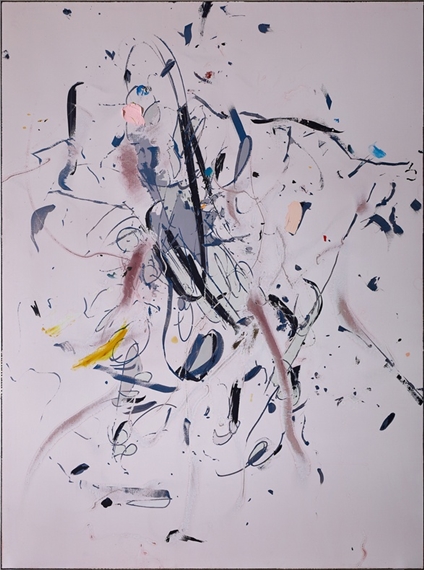
Recommended for you
������á�Ի���'s diverse and energetic painting features intricately structured compositions that mix strong linear elements and rich bursts of colour. Some canvases feature abstracted, atomised forms, while others have more densely overlaid imagery in which it is possible to pick out figurative elements.
His paintings deftly combine representation and abstraction, linear draughtsmanship and colouration, minimalism and gesturalism. Over the course of his career ������á�Ի��� has mixed diverse references: a physicality that recalls Action Painting, the shorthand figuration of cartoons, and passages evoking painterly precedents ranging from El Greco to Giacometti, Velázquez to Picabia. This stylistic multiplicity grows out of ������á�Ի���'s detailed and informed knowledge of art history. While his references are broad he has, in recent years, developed a specific engagement with the work of old and modern masters from his native country, Spain, as a way of getting in touch with his personal and artistic roots.
In keeping with the breadth of his influences, ������á�Ի��� employs a variety of techniques including washing, scraping, and working directly from paint tubes. He has a meticulous and process-oriented approach to making work, and his paintings openly display the triumphs and struggles of the artist's practice, creating a tension between beauty and destruction.
For his first show with Victoria Miro, ������á�Ի��� has produced a series of 'wash' paintings. These paintings are characterised by strong underlays of colour and a gestural use of line. The works are produced by layering and removing layers of paint. ������á�Ի���'s method involves literally digging through layers of paint to the canvas, in a process that the artist associates with sculptural carving. The resulting paintings have a dramatic, exploratory quality.

 ARTISTS
ARTISTS









